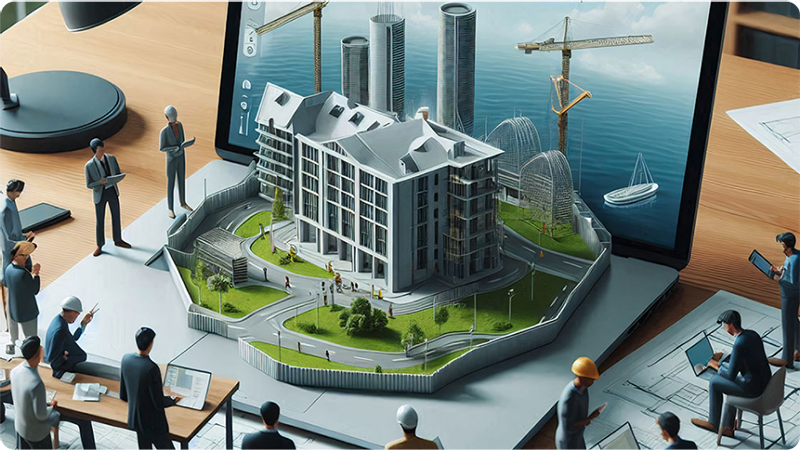If you’re familiar with the saying, “It takes a village to raise a child,” you’ll recognize that the same concept applies to any task that requires a community or team working toward a shared goal. Just as raising a child is a complex and collaborative effort, so too is guiding a building from a mere design concept through to the post-construction phase.
Fortunately for the AEC industry, modern BIM technology has significantly transformed the collaborative process, making communication more efficient, faster, and easier than ever before.
Improved Communication Through Visualization
BIM provides 3D visualizations of projects, and finding a platform that offers high-quality fast rendering can be a game-changer—especially for architects. Beyond giving stakeholders a clear understanding of design intent, these visual aids support better decision-making and help identify potential issues early in the design process. This enhanced clarity fosters a more collaborative approach to problem-solving and idea-sharing among team members.
Easy access to BIM visualization is another crucial factor. To maximize efficiency, choose a platform that offers mobile or tablet support, allowing you to keep your design at your fingertips and collaborate efficiently, no matter where you are.

Enhanced Design Collaboration
BIM enables online collaboration during the design phase, allowing various disciplines to work on a shared digital model. Faster iterations and immediate feedback help reduce design conflicts and errors. AEC and MEP professionals can collaborate within the same model, ensuring their designs align completely before construction begins.
To maximize BIM collaboration, you need a BIM platform that offers interoperability among different design software. This ensures that every team member, regardless of their field of expertise or preferred software, can contribute effectively, visualize their work in context, and collaborate smoothly in shaping the building.

Centralized Data and Shared Access
BIM enhances collaboration through centralized data management as well. By storing all project information in a single, cloud-based model, BIM ensures that professionals have access to the most up-to-date plans and specifications. This centralized approach eliminates discrepancies that often arise from multiple data sources, reducing errors and miscommunication. It also enables team members to work on the same platform, making fast updates possible from different locations.
GeoVision
If you’re looking for a BIM platform to enhance collaboration, try GeoVision for free! We are a cloud-based platform offering high-quality, fast visualization on all devices. Simply download the BIM plugin for your design software, upload your data to the GeoVision cloud, and start collaborating effectively. Enjoy!

